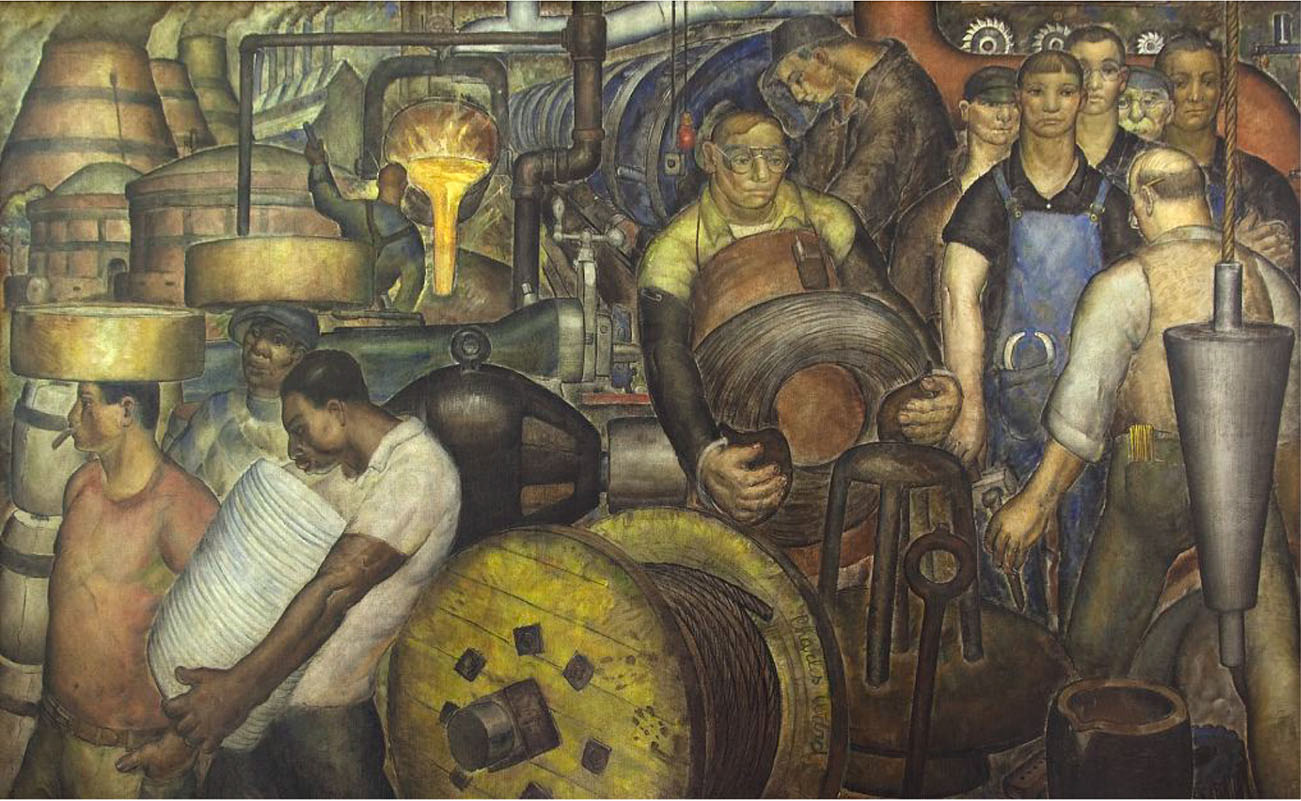Module 10: Franklin Roosevelt and the New Deal, 1932-1941
Section outline
-
 Image from Chapter 26 of U.S. History (opens in new window) from OpenStax, licensed under Creative Commons Attribution License v4.0 with the image information: President Roosevelt’s Federal Project Number One allowed thousands of artists to create public art. This initiative was a response to the Great Depression as part of the Works Project Administration, and much of the public art in cities today date from this era. New Deal by Charles Wells can be found in the Clarkson S. Fisher Federal Building and U.S. Courthouse in Trenton, New Jersey. (credit: modification of work by Library of Congress)This module explores Roosevelt and the New Deal. Franklin Delano Roosevelt and his attitude of optimism and possibility won the 1932 election in a landslide. Roosevelt lost no time in taking bold steps to fight back against the poverty and unemployment plaguing the country. Roosevelt had significant critics at the end of the First New Deal but the last major piece of New Deal legislation that Roosevelt passed was the Fair Labor Standards Act, which set a minimum wage, established a maximum-hour workweek, and forbade child labor. This law, as well as Social Security, still provides much of the social safety net in the United States today.Upon completion of this module, you will be able to:
Image from Chapter 26 of U.S. History (opens in new window) from OpenStax, licensed under Creative Commons Attribution License v4.0 with the image information: President Roosevelt’s Federal Project Number One allowed thousands of artists to create public art. This initiative was a response to the Great Depression as part of the Works Project Administration, and much of the public art in cities today date from this era. New Deal by Charles Wells can be found in the Clarkson S. Fisher Federal Building and U.S. Courthouse in Trenton, New Jersey. (credit: modification of work by Library of Congress)This module explores Roosevelt and the New Deal. Franklin Delano Roosevelt and his attitude of optimism and possibility won the 1932 election in a landslide. Roosevelt lost no time in taking bold steps to fight back against the poverty and unemployment plaguing the country. Roosevelt had significant critics at the end of the First New Deal but the last major piece of New Deal legislation that Roosevelt passed was the Fair Labor Standards Act, which set a minimum wage, established a maximum-hour workweek, and forbade child labor. This law, as well as Social Security, still provides much of the social safety net in the United States today.Upon completion of this module, you will be able to:- Describe the events of the 1932 presidential election and identify the characteristics that made Franklin Roosevelt a desirable candidate (CO 1-5)
- Explain why Congress amended the U.S. Constitution to reduce the period of time between presidential elections and inaugurations (CO 1-5)
- Identify the key pieces of legislation included in Roosevelt’s “First New Deal” (CO 1-5)
- Assess the strengths, weaknesses, and general effectiveness of the First New Deal (CO 1-7)
- Explain Roosevelt’s overall vision for addressing the structural problems in the U.S. economy (CO 1-5)
- Explain the ways that the Second New Deal addressed criticisms of the First New Deal (CO 1-5)
- Assess the entire New Deal, especially in terms of its impact on women, African Americans, and Native Americans (CO 1-7)
To achieve these objectives:
- Read the Module 10 Introduction above.
- Read and view the materials in Module 10 (click below)
- View the Module 10 PowerPoint below.
- Complete Module 10 quizzes/assignments/discussion boards based on chapter/document reading.
Module Pressbooks Resources and Activities
You will find the following resources and activities in this module at the Pressbooks website. Click on the links below to access or complete each item.
Background Colour
Font Face
Font Kerning
Font Size
Image Visibility
Letter Spacing
Line Height
Link Highlight
Text Colour
